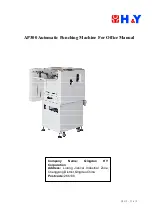
Initial Step: Charge the Battery
On the back of the Wireless Drop Counter, pry open the rubber
seal that covers the Micro USB port. Charge the battery by
connecting the Micro USB port to any standard USB port or
USB charger, using the included Micro USB Cable. The charger
circuit inside the sensor turns itself off when the unit is fully
charged. The battery status light is solid yellow while charging.
When fully charged, the light changes to solid green. Initial
charging time may be three hours or longer, depending on the
power source and the condition of the battery.
Get the Software
You can use the sensor with SPARKvue or PASCO Capstone
software. If you’re not sure which to use, visit
pasco.com/products/guides/software-comparison
SPARKvue is available as a free app for Chromebook, iOS, and
Android devices. We offer a free trial of SPARKvue and
Capstone for Windows and Mac. To get the software, go to
or search for SPARKvue in your device’s
app store.
If you have installed the software previously, check that you have
the latest update:
SPARKvue
Go to Main Menu
> Check for Updates
PASCO Capstone
Go to Help > Check for Updates.
Check for a Firmware Update
SPARKvue
1. Press the power button until the lights turn on.
2. Open SPARKvue.
3. Select Sensor Data on the Welcome Screen.
4. Select the sensor that matches its device ID. A notification
will appear if a firmware update is available. Click Yes to
update the firmware.
5. Close SPARKvue
PASCO Capstone
1. Press and hold the power button until the lights turn on.
2. Open PASCO Capstone.
3. Click Hardware Setup.
4. Select the sensor that matches its device ID. A notification
will appear if a firmware update is available. Click Yes to
update the firmware.
5. Close Capstone.
ON/OFF and Sleep Information
Before turning the sensor on, make sure that nothing is blocking
the drop window. To turn the sensor on, press and hold the ON
button. When the battery status LED shines red for a moment,
release the ON button. The Bluetooth status LED will then start
to blink. This indicates that the sensor is ready to be "paired"
with a device using the data collection software.
NOTE: The sensor calibrates itself each time
that it is turned on. Therefore, it is important that
the drop window is unblocked when the sensor
is turned on.
To turn the sensor off, press and hold the ON button for a
moment until the battery status LED shines red. Release the ON
button; the Bluetooth status LED will stop blinking. The sensor
also puts itself to sleep after one hour of inactivity if connected,
and after several minutes if not connected.
LED Information
The "drop" LED blinks when a drop is detected passing through
the drop window.
If the lens in the drop window becomes obscured or dirty, the
"drop" LED shines continuously. Clean the lens with water or a
glass cleaner and a piece of lens paper or a lint-free cloth. Dry
with a cotton swab.
The Bluetooth and the Battery Status LEDs operate as follows:
Bluetooth LED
Status
Red blink
Ready to pair
Green blink
Connected
NOTE: The Bluetooth LED will not light up if the
sensor is connected via a USB port.
Battery LED
Status
Red blink
Low power
Yellow ON
Charging
Green ON
Fully Charged
Wireless Drop Counter | PS-3214
2

























